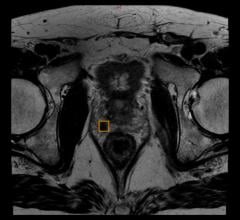
February 19, 2010 – The use of medical technology in the United States increased dramatically between 1996 and 2006, according to “Health, United States, 2009,” the federal government’s 33rd annual report to the president and Congress on the health of all Americans.
The report was prepared by the Centers for Disease Control and Prevention’s National Center for Health Statistics from data gathered by state and federal health agencies and through ongoing national surveys.
This year's edition features a special section on medical technology, and finds that the rate of magnetic resonance imaging (MRI), and computed and positron emission tomography (CT and PET) scans ordered or provided, tripled between 1996 and 2007.
Highlights of the special section include:
• The rate of adults ages 45 and older discharged from the hospital after receiving at least one knee replacement procedure increased 70 percent from 1996 to 2006 (26.5 per 10,000 population in 1996 to 45.2 per 10,000 in 2006).
• From 1988–1994 to 2003–2006, use of anti-diabetic drugs among adults ages 45 years and older increased about 50 percent, and the use of statin drugs to lower cholesterol among this age group increased almost tenfold.
• The number of new organ transplantations per 1 million people increased 31 percent for kidney transplants (43.7 per 1 million in 1997 vs. 57.2 in 2006) and 42 percent for liver transplants between 1997 and 2006 (15.6 per 1 million in 1997 vs. 22.2 in 2006).
The full report contains 150 data tables in addition to the special feature on medical technology. The tables cover the spectrum of health topics, serving as a comprehensive snapshot of the nation's health.
Life expectancy at birth increased more for the black than for the white population between 1990 and 2007, thereby narrowing the gap in life expectancy between these two racial groups. Overall U.S. life expectancy in 2007 was 77.9 years.
In 2007, 20 percent of U.S. adults were current cigarette smokers, a slight decrease from 21 percent in the previous three years. Men were more likely to be current cigarette smokers than women (22 percent vs. 17 percent).
In 2005–2006, 30 percent of adults often or almost always had trouble sleeping in the past month.
In 2007, 20 percent of adults 18 years and over had at least one emergency department visit in the past year, and 7 percent had two or more visits.
The percentage of the population taking at least one prescription drug during the previous month increased from 38 percent in 1988–1994 to 47 percent in 2003–2006, and the percentage taking three or more prescription drugs increased from 11 percent to 21 percent.
The full report is available at www.cdc.gov/nchs/hus.htm


 July 02, 2024
July 02, 2024 








